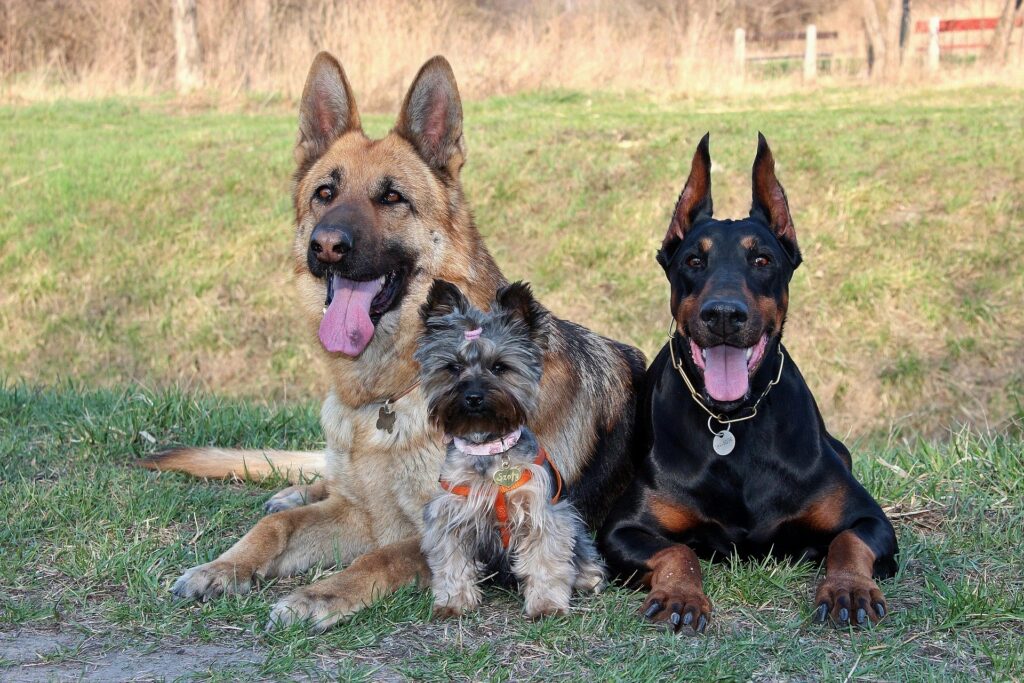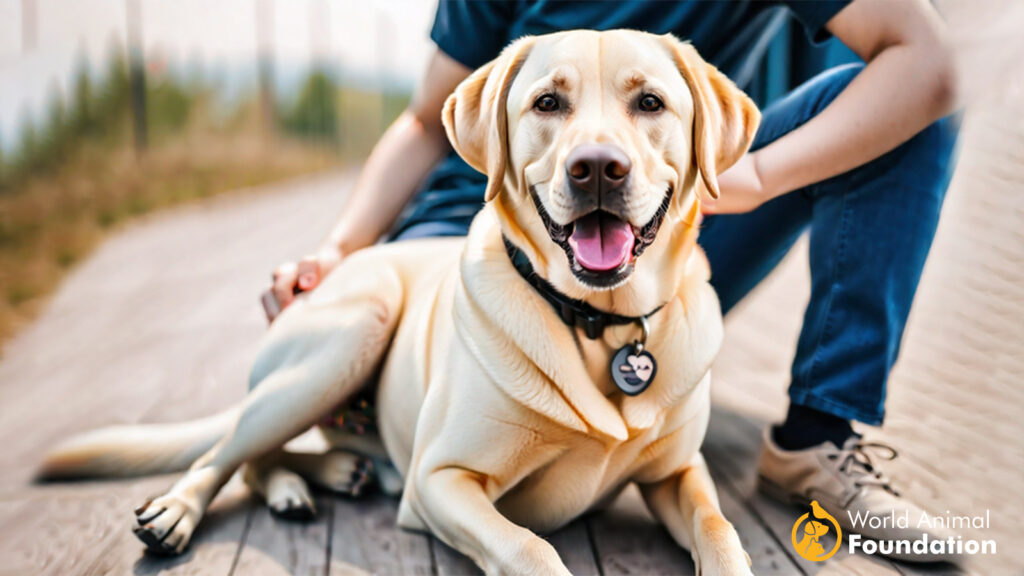Pit Bulls. The very name conjures up an image, doesn’t it? A big, muscular dog with a tough-guy reputation. But there’s so much more to these dogs than meets the eye.
Let’s dive into the world of Pit Bulls and discover the nine breeds that fall under this umbrella term.
Trust me, you’re in for a few surprises!

What Exactly Is a Pit Bull?
First things first, what is a Pit Bull? The term “Pit Bull” isn’t a breed; it’s a category.
Think of it like the term “citrus fruit.”
Just as oranges, lemons, and limes are all citrus fruits, several breeds are considered Pit Bulls.
They all share some common traits but have unique characteristics that set them apart.
The American Pit Bull Terrier
The Classic Pit Bull
When most people think of a Pit Bull, they picture the American Pit Bull Terrier.
This breed is the poster child for Pit Bulls and has a reputation for being strong and loyal.
Physical Traits
Size: Medium
Weight: 30-60 pounds
Build: Muscular and athletic
Coat: Short and shiny
Personality
These dogs are known for their courage and determination.
They’re great with families, especially children. Yes, you heard that right.
Despite the myths, American Pit Bull Terriers are often called “nanny dogs” because of their protective nature towards kids.
The American Staffordshire Terrier
The Gentle Giant
Next up is the American Staffordshire Terrier.
Sometimes confused with the American Pit Bull Terrier, this breed is a bit stockier and often more mellow.
Physical Traits
Size: Medium to large
Weight: 40-70 pounds
Build: Stocky and muscular
Coat: Short and glossy
Personality
These dogs are affectionate and friendly.
They thrive on human interaction and make fantastic companions.
Imagine a big teddy bear with muscles – that’s the American Staffordshire Terrier.
The Staffordshire Bull Terrier
The Little Dynamo
Meet the Staffordshire Bull Terrier, or “Staffy” for short.
Smaller than the previous breeds, this dog packs a punch in a smaller package.
Physical Traits
Size: Small to medium
Weight: 24-38 pounds
Build: Compact and muscular
Coat: Short and smooth
Personality
Staffies are known for their exuberance and zest for life.
They’re playful, loving, and incredibly loyal. Think of them as the life of the party in the dog world.
The American Bully
The New Kid on the Block
The American Bully is a relatively new breed, developed in the 1990s.
It’s a mix of several Pit Bull breeds and is bred for companionship.
Physical Traits
Size: Medium to large
Weight: 70-120 pounds
Build: Stocky and heavily muscled
Coat: Short and smooth
Personality
American Bullies are known for their gentle and friendly nature.
Despite their imposing appearance, they’re real softies at heart.
They’re like the gentle giants of the Pit Bull world.
The Bull Terrier
The Egghead
The Bull Terrier is instantly recognizable thanks to its unique head shape.
If you’ve ever seen the Target dog, you’ve seen a Bull Terrier.
Physical Traits
Size: Medium
Weight: 50-70 pounds
Build: Muscular and robust
Coat: Short and dense
Personality
Bull Terriers are playful and clownish.
They love to entertain and are always up for a game.
Picture a stand-up comedian in dog form – that’s a Bull Terrier for you.
The Alapaha Blue Blood Bulldog
The Rare Gem
Last but certainly not least, we have the Alapaha Blue Blood Bulldog.
This rare breed is known for its striking appearance and protective nature.
Physical Traits
Size: Medium to large
Weight: 60-100 pounds
Build: Muscular and athletic
Coat: Short and smooth
Personality
These dogs are protective and loyal.
They’re great with families and make excellent guard dogs.
Imagine having a loyal knight by your side – that’s the Alapaha Blue Blood Bulldog.

Why Do Pit Bulls Have a Bad Reputation?
The Power of Media
One word: Media. Pit Bulls have been portrayed negatively in the media for years.
Any dog attack involving a Pit Bull gets sensationalized, leading to an unfair stigma.
Misidentification
Many breeds get mislabeled as Pit Bulls, adding to the confusion and negative perception.
Not every muscular, short-haired dog is a Pit Bull, but they often get grouped together.
Bad Owners, Not Bad Dogs
Let’s be real. Any dog can be dangerous if not trained properly.
It’s often the owners, not the dogs, that are the problem. Responsible ownership is key.
Training and Socialization
Start Young
Training and socialization should start early with Pit Bulls.
They’re intelligent and eager to please, making them highly trainable.
Positive Reinforcement
Use positive reinforcement techniques to train your Pit Bull.
They respond well to rewards and praise.
Socialize, Socialize, Socialize
Expose your Pit Bull to different environments, people, and other animals.
This helps them become well-rounded and well-behaved dogs.
Myths and Facts About Pit Bulls
Myth: Pit Bulls Have Locking Jaws
False. Pit Bulls do not have a unique jaw structure. Their jaws are just like any other dog’s.
Myth: Pit Bulls Are Naturally Aggressive
False. Aggression is not a breed-specific trait. It’s all about training and socialization.
Fact: Pit Bulls Are Loving and Loyal
True. Pit Bulls are known for their loyalty and affection towards their families.
The Importance of Breed-Specific Legislation (BSL)
What Is BSL?
Breed-Specific Legislation (BSL) is a law that bans or restricts certain breeds, often targeting Pit Bulls.
Why It Doesn’t Work
BSL is ineffective and unfair.
It targets the breed rather than addressing the root of the problem – irresponsible ownership.
What We Can Do
Advocate for fair laws that focus on responsible pet ownership rather than banning specific breeds.
Education and awareness are key.

Conclusion
Pit Bulls are a diverse group of breeds with unique traits and personalities.
They’ve gotten a bad rap over the years, but with proper training and socialization, they can be wonderful companions.
Remember, it’s not about the breed; it’s about the owner.
Let’s give these dogs the fair chance they deserve.
FAQs
1. Are Pit Bulls good family pets?
Absolutely! With proper training and socialization, Pit Bulls can be loving and loyal family pets.
2. Are all Pit Bulls aggressive?
No, aggression is not a breed-specific trait. It’s all about how they are raised and trained.
